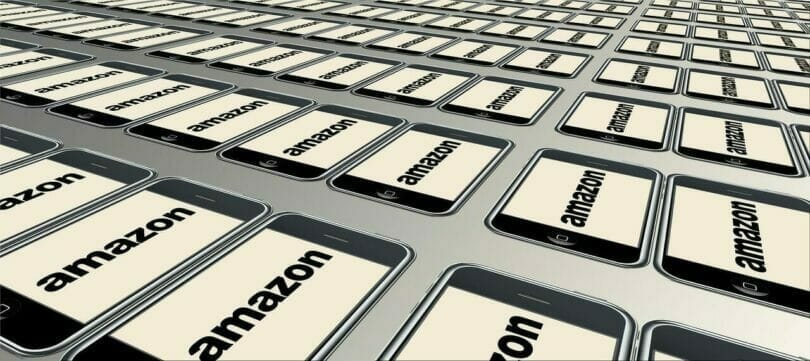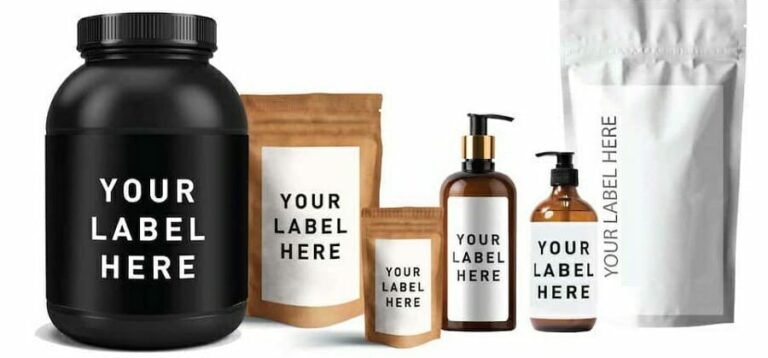Going Green: The Rise of Eco-Friendly Packaging Solutions
Introduction: The Importance of Eco-Friendly Packaging Solutions
In today’s world, where environmental concerns are at the forefront of global discussions, the importance of eco-friendly packaging solutions cannot be overstated. Packaging plays a crucial role in our daily lives, from protecting products during transportation to providing information to consumers. However, traditional packaging methods often have a negative impact on the environment, contributing to waste and pollution. This blog post aims to highlight the significance of eco-friendly packaging solutions and explore the various benefits they offer.
The Environmental Impact of Traditional Packaging Methods
Traditional packaging methods, such as single-use plastics and non-recyclable materials, have a significant environmental impact. These materials are often derived from fossil fuels and take hundreds of years to decompose, leading to the accumulation of waste in landfills and oceans. The production of these materials also contributes to greenhouse gas emissions and the depletion of natural resources.
Furthermore, traditional packaging methods often involve excessive use of resources, such as water and energy, during the manufacturing process. This not only adds to the carbon footprint but also puts a strain on the environment. Additionally, the transportation of products in bulky and inefficient packaging leads to increased fuel consumption and emissions.
The Benefits of Eco-Friendly Packaging Solutions
Eco-friendly packaging solutions offer a range of benefits that can help mitigate the negative impact of traditional packaging methods on the environment. Firstly, they are made from sustainable materials that are either biodegradable or recyclable. Biodegradable packaging materials break down naturally over time, reducing the amount of waste that ends up in landfills. Recyclable packaging materials can be processed and reused, reducing the need for virgin materials and conserving resources.
Moreover, eco-friendly packaging solutions are designed to be more efficient and lightweight, reducing the amount of material required for packaging. This not only saves resources but also reduces transportation costs and emissions. Additionally, eco-friendly packaging often incorporates innovative designs that minimize waste and maximize functionality, such as reusable containers and compostable packaging.
Sustainable Packaging Materials: From Biodegradable to Recycled
Sustainable packaging materials are at the forefront of eco-friendly packaging solutions. These materials are derived from renewable resources and have a minimal impact on the environment. Biodegradable packaging materials, such as bioplastics and plant-based fibers, break down naturally and do not contribute to long-term waste accumulation. They can be composted and returned to the earth, enriching the soil and closing the loop in the lifecycle of packaging.
Recycled packaging materials, on the other hand, are made from post-consumer waste or industrial by-products. These materials are processed and transformed into new packaging, reducing the demand for virgin materials and diverting waste from landfills. Recycled packaging materials can be just as durable and functional as their non-recycled counterparts, making them a viable alternative for businesses looking to reduce their environmental impact.
Many companies have already embraced sustainable packaging materials and incorporated them into their operations. For example, Patagonia, a leading outdoor clothing brand, uses recycled materials for their packaging, including recycled polyester and cardboard. This not only aligns with their commitment to sustainability but also helps reduce their carbon footprint. Another example is Lush, a cosmetics company that uses biodegradable packaging materials, such as compostable pots and recycled paper, to minimize waste and pollution.
Eco-Friendly Packaging Innovations: From Edible to Plant-Based
In addition to sustainable packaging materials, there have been numerous innovations in the field of eco-friendly packaging. These innovations aim to address the limitations of traditional packaging methods and provide more sustainable alternatives. Two notable examples of eco-friendly packaging innovations are edible packaging and plant-based packaging materials.
Edible packaging involves using food-grade materials that are safe for consumption as packaging. This eliminates the need for separate packaging disposal and reduces waste. Edible packaging can be made from various materials, such as seaweed, starch, and even fruit peels. These materials are biodegradable and can be consumed along with the product, eliminating the need for additional waste management.
Plant-based packaging materials, on the other hand, are derived from renewable plant sources, such as corn, sugarcane, and bamboo. These materials are biodegradable and have a lower carbon footprint compared to traditional packaging materials. Plant-based packaging can be used for a wide range of products, from food and beverages to personal care items. It offers a sustainable alternative to petroleum-based plastics and reduces the reliance on fossil fuels.
Several companies have embraced these innovative eco-friendly packaging solutions. For instance, WikiFoods, a company founded by Harvard professor David Edwards, has developed edible packaging made from natural ingredients. Their products, such as the WikiPearl, are wrapped in an edible skin that can be consumed along with the food inside. Another example is Ecovative Design, a company that produces packaging materials using mycelium, the root structure of mushrooms. These materials are biodegradable, compostable, and can be grown using agricultural waste.
The Role of Consumers in Choosing Eco-Friendly Packaging
Consumers play a crucial role in driving the demand for eco-friendly packaging solutions. By making conscious choices and supporting businesses that prioritize sustainability, consumers can have a significant impact on the environment. When consumers choose products packaged in eco-friendly materials, they send a clear message to businesses that sustainability is important to them.
Consumer choices can also influence the behavior of businesses and encourage them to adopt more sustainable packaging practices. As the demand for eco-friendly packaging increases, businesses are more likely to invest in research and development to find innovative solutions. This, in turn, can lead to a wider availability of sustainable packaging options and a shift towards more environmentally friendly practices.
To choose eco-friendly packaging, consumers can look for labels and certifications that indicate sustainable practices, such as the Forest Stewardship Council (FSC) certification for paper products or the Biodegradable Products Institute (BPI) certification for compostable materials. Consumers can also opt for products with minimal packaging or packaging made from recycled or biodegradable materials. By making these choices, consumers can contribute to reducing waste and pollution and promote a more sustainable future.
The Economic Impact of Eco-Friendly Packaging Solutions
While the primary focus of eco-friendly packaging solutions is on their environmental benefits, they also have a positive economic impact. Adopting sustainable packaging practices can lead to cost savings for businesses in the long run. For example, using lightweight and efficient packaging materials can reduce transportation costs and improve logistics. Additionally, incorporating recycled materials can lower the cost of raw materials and reduce waste disposal expenses.
Moreover, eco-friendly packaging solutions can enhance a company’s brand image and reputation. In today’s market, consumers are increasingly conscious of the environmental impact of their purchasing decisions. By using sustainable packaging, businesses can differentiate themselves from competitors and attract environmentally conscious consumers. This can lead to increased customer loyalty and market share.
Several companies have already experienced the economic benefits of eco-friendly packaging solutions. For instance, Dell, a leading technology company, has implemented a closed-loop recycling system for its packaging materials. This has not only reduced waste and emissions but also resulted in cost savings of over $65 million. Another example is Unilever, a multinational consumer goods company, which has committed to using 100% recyclable packaging by 2025. This sustainable packaging initiative has not only aligned with their sustainability goals but also helped drive sales and brand loyalty.
The Future of Sustainable Packaging: Trends and Predictions
The future of sustainable packaging is promising, with ongoing trends and predictions pointing towards more innovative and environmentally friendly solutions. One of the key trends is the use of advanced materials, such as bioplastics and nanomaterials, that offer improved functionality and sustainability. These materials can provide better barrier properties, extend shelf life, and enhance the overall performance of packaging.
Another trend is the integration of technology into packaging, such as smart labels and sensors, to monitor product freshness and quality. This can help reduce food waste and improve supply chain efficiency. Additionally, the use of 3D printing technology in packaging production is expected to increase, allowing for more customized and efficient designs.
Furthermore, the concept of a circular economy is gaining traction in the packaging industry. A circular economy aims to minimize waste and maximize resource efficiency by designing products and packaging for reuse, recycling, and composting. This approach involves the collaboration of various stakeholders, including businesses, consumers, and governments, to create a closed-loop system that reduces waste and pollution.
Case Studies: Companies Leading the Way in Eco-Friendly Packaging
Several companies are leading the way in implementing eco-friendly packaging solutions and making a positive impact on the environment. One such company is Loop, a global reuse platform that partners with leading consumer goods companies to offer products in reusable packaging. Loop’s innovative system allows consumers to order products online and have them delivered in durable, refillable containers. Once the products are consumed, the empty containers are picked up, cleaned, and refilled, creating a closed-loop system that eliminates single-use packaging waste.
Another example is Adidas, a renowned sportswear brand, which has committed to using only recycled polyester in its products and packaging by 2024. This initiative not only reduces the company’s reliance on virgin materials but also helps divert plastic waste from landfills and oceans. Adidas has also partnered with Parley for the Oceans to create shoes and apparel made from recycled ocean plastic, further highlighting their commitment to sustainability.
Conclusion: The Need for More Sustainable Packaging Solutions
In conclusion, the importance of eco-friendly packaging solutions cannot be overstated. Traditional packaging methods have a significant negative impact on the environment, contributing to waste and pollution. Eco-friendly packaging solutions offer a range of benefits, including the reduction of waste and pollution, conservation of resources, and improved brand image.
Sustainable packaging materials, such as biodegradable and recycled materials, provide viable alternatives to traditional packaging materials. Innovative eco-friendly packaging solutions, such as edible and plant-based packaging, offer even more sustainable options. Consumers play a crucial role in driving the demand for eco-friendly packaging and can make a significant impact by choosing sustainable options.
The economic impact of eco-friendly packaging solutions is also significant, with cost savings and improved brand reputation being key benefits for businesses. The future of sustainable packaging looks promising, with ongoing trends and predictions pointing towards more innovative and environmentally friendly solutions. Companies that have embraced eco-friendly packaging solutions, such as Loop and Adidas, are leading the way in creating a more sustainable future.
In conclusion, the need for more sustainable packaging solutions is evident. Businesses and consumers alike must prioritize sustainability and choose eco-friendly packaging options to reduce waste, conserve resources, and protect the environment. By working together, we can create a more sustainable future for generations to come.
Check out this informative article on eco-friendly packaging and its benefits for businesses: “Potential of Millets to Improve India’s Food Security”. It discusses how using sustainable packaging materials can contribute to reducing waste and carbon footprint in the food industry.




